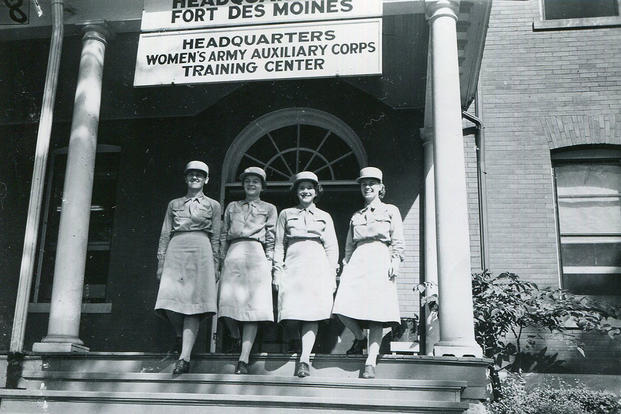Early 20th-century advances in military communications-electronics technology provided the Army with additional opportunities to employ women.
The Signal Corps, for example, used civilian women as telephone operators during World War I. These women, however, did not receive even the unequal military status afforded to Army Nurses. The Signal Corps initially recruited bilingual women from commercial telephone companies but later accepted less experienced applicants to fill the growing demand.
The first group of civilian female telephone operators to serve with the American Expeditionary Forces (AEF) arrived in Paris in early 1918. Just more than 200 female telephone operators ultimately served in France with the First, Second, and Third Army Headquarters. The women worked in Paris and dozens of other locations throughout France and England.
Nicknamed the “Hello Girls,” these women worked long hours, often at stressful locales such as First Army Headquarters during active operations. Despite the pressure, the women successfully performed their duties. In one instance, the women of the Female Telephone Operator’s Unit, First Army Headquarters, had to be forcibly evacuated from their stations during the Meuse-Argonne campaign even after their building caught fire. Once back at their posts, the women restored operations within an hour. They subsequently earned a commendation from the chief signal officer of First Army, Maj. Gen. George Owen Squier, who cited the women’s “unquestioned superiority” as switchboard operators and their value in freeing men for the fighting front.
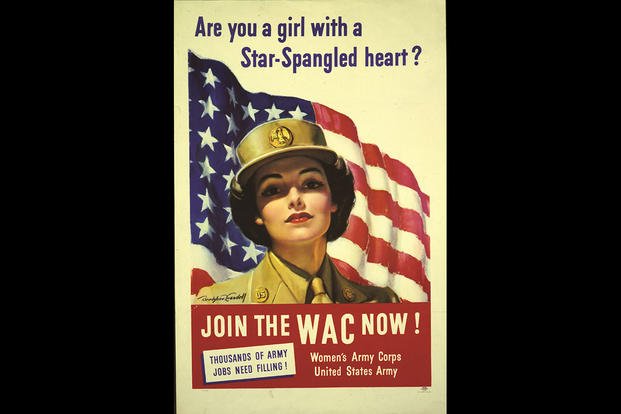
Despite the successful use of women in time of need, the Army remained gender restricted throughout the early 20th century. This was in keeping with the mores of American society at the time, when many men and women alike conformed to the idealized notion of a woman’s place: the home. Competition for jobs during the Great Depression heightened adherence to this ideal, ending society’s relative tolerance of feminist activities in the 1920s. The idea of a woman in an Army uniform was “unfathomable” to many Americans.
What, then, led to the Army’s decision to enlist women during World War II? The “unfathomable” became reality as the Army struggled to fulfill wartime quotas from an ever-shrinking pool of candidates. By mid-1943, the Army was simply running out of eligible white men to enlist. The Army could scarcely spare those men already in the service for non-combatant duties. Gen. Dwight D. Eisenhower remarked:
The simple headquarters of a Grant or Lee were gone forever. An Army of filing clerks, stenographers, office managers, telephone operators and chauffeurs had become essential, and it was scarcely less than criminal to recruit these from needed manpower when great numbers of highly qualified women were available.
The utilization of women in an organization such as the Women’s Army Auxiliary Corps (WAAC) offered a “golden opportunity” to solve manpower shortages. So recognizable was the opportunity that Chief of Staff Gen. George C. Marshall told the War Department in November 1941, “I want a women’s corps right away, and I don’t want any excuses!”
Urgent wartime demands necessitated the use of all able, willing citizens, regardless of gender. In recruiting women, the Army assured them that they would be doing “unusual and exciting work” and that their service “in making available technically trained men for combat service will be of great value in winning the war.”
Congresswoman Edith Nourse Rogers (R-Mass.) introduced a bill to establish the WAAC on May 28, 1941. She cited two rationales for such an organization: to ease the shortage of able-bodied men and “to answer an undeniable demand from American women that they be permitted to serve their country, together with the men of America, to protect and defend their cherished freedoms and democratic principles and ideals.” WAAC/WAC veterans later recalled this strong desire to be of service. Mary Robinson, for example, said, “I just thought it was the sensible thing to do. The British had done it in two wars.”
The 77th Congress eventually established the WAAC with Public Law (PL) 77-554 on May 14, 1942, after much heated debate over whether “women generals would rush about the country dictating orders to male personnel and telling the commanding officers of posts how to run their business.” One outraged commentator demanded to know, “Who then will do the cooking, the washing, the mending -- the humble home tasks to which every woman has devoted herself?”
Bipartisan objections abounded, with Republicans and Democrats alike denigrating the idea of women in the military. One opposing senator went so far as to claim that the bill “cast a shadow on the sanctity of the home.”
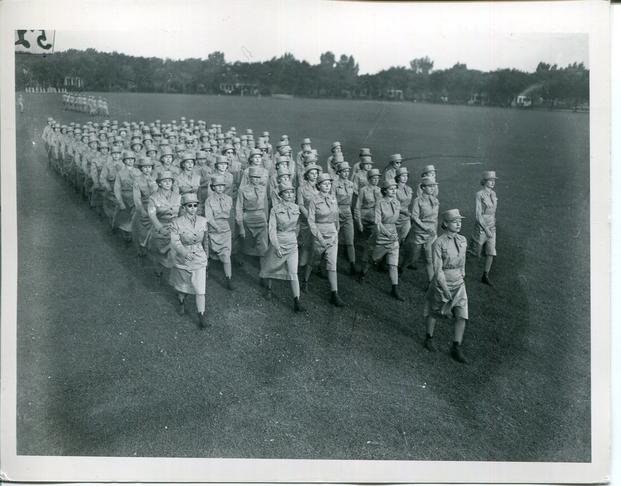
After 98 columns of debate in the Congressional Record, the Rogers bill finally passed the House 249-86. The Senate approved the bill 38-27. Amid this turmoil, the Army became the first of the services to enlist women during World War II. The Navy (which had mustered out its Yeomannettes after World War I), Coast Guard and Marine Corps followed the Army’s lead, admitting women in July 1942, November 1942 and February 1943, respectively.
The Army required that WAACs be high school graduates between 21 and 45 years of age, between five and six feet tall, between 105 and 200 pounds, and “of good health and character.” The women had to pass a physical examination and an intelligence test similar to the one administered to prospective male officers, yet the rigorous requirements hardly guaranteed pay parity. Though often better educated, the average WAAC received less pay than her male counterpart. PL 77-554 codified inequalities between male soldiers and female auxiliaries from the very beginning, particularly with disparities in pay.
A last-minute attempt by the Army to substitute a bill authored by Sen. Elbert D. Thomas (D-Utah) that would have allowed women to serve “in” rather that “with” the Army had proved disastrous in Congress, though Thomas swore it expressed the wishes of Gen. Marshall himself.
The substitute bill would have granted women the same rank and held them accountable to the same discipline and regulations as male soldiers, barring the women only from combat. Thomas argued that women deserved the same recognition “for equal work.” Removing women from the home to serve “with” the Army was divisive enough; letting women “in” the Army and giving them equal status to men was just too radical for many at this point.
The Army’s demand for WAACs steadily increased in the six months after Congress established the Auxiliary Corps. Sgt. John T. Lowery, an Army recruiter, informed the Lewiston Tribune in November 1942 that “this district has been called upon to enlist as many women as possible …”
By December, WAAC Lt. Mary E. McGlinn admonished college women that "the manpower of America is needed in the field, and women must step into the non-combatant jobs now being filled by soldiers. American women have accepted all the privileges enjoyed by men in this Democracy; now they are being called on to share some of the responsibilities. I can’t conceive of the girls in our colleges refusing to follow their brothers into the service at a time like this."
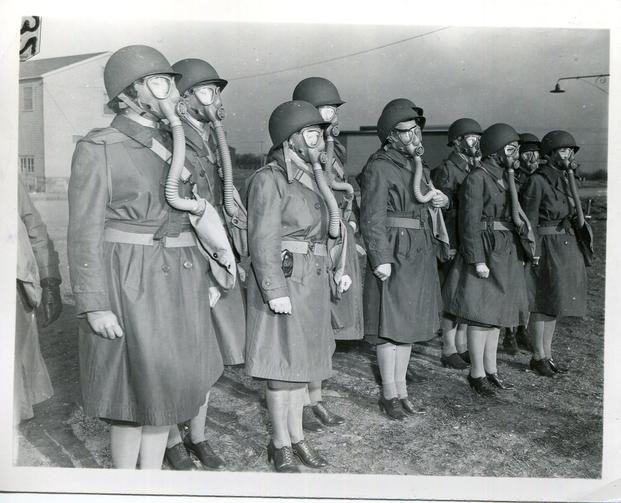
In January 1943, Congresswoman Rogers and WAAC Director Col. Oveta Culp Hobby drafted a bill to make the WAAC a part of the Army, as opposed to an auxiliary element. Gen. Marshall approved the bill, which was introduced into the 78th Congress. He even “urged passage of the bill” in a letter to Sen. Andrew J. May (D-Ky.) of the Senate Military Affairs Committee.
The Senate approved the bill on Feb. 15, but the House, evidently not convinced of the inaccuracy of an ongoing slander campaign against the WAACs, demanded statistics and briefings on WAAC pregnancy and venereal disease rates and questioned “the effects of the change in status.”
Questions included:
- What would be the top rank for women?
- How large would the new Corps be?
- What types of duty would Corps members perform?
- What benefits would be granted?
Several months passed before both houses approved the bill. President Franklin D. Roosevelt signed the legislation into law on July 1, 1943.
The law creating the WAAC expired in September 1943, and WAACs could choose to transition to the Women’s Army Corps (WAC) if they so desired and met all the requirements, including standing at least 58 inches tall, weighing at least 100 pounds and possessing good vision. More than 75% of the WAAC chose to enlist, some no doubt echoing radio operator Dorothy Gills’ feelings about how much she “loved the Army and what it meant to me.”
With the termination of auxiliary status, WACs received the same pay, rank and benefits as male soldiers. This was a remarkable advancement, especially considering that women in private industry on average earned only 80% of the salary of their male counterparts, even in the year 2000.
It is worth noting that the Army continued to deny nurses many of the advancements bestowed upon WACs during World War II. Although women with the Army Nurse Corps became eligible for officer rank and some retirement benefits after World War I, pay and allowances still differed from other officers.
The Regular Army did not offer Nurse Corps members full military rank until 1944, after the much junior Women’s Army Corps made these gains in equality. This may be because caring for the sick was often considered a universally female role, and to recognize nurses as equal to male soldiers would have threatened established gender roles. Reinforcing gender norms was indeed a priority during this period of gender integration.
WAAC Elizabeth Pollock, in one example, recalled the women in her outfit singing the praises of their male colonel, saying “how nice and kind” he was, how much they liked him and how “they couldn’t have picked a more wonderful man for the job.” An exasperated male soldier came immediately to the colonel’s “defense” and assured the women, “He can get mad, too!”
While male soldiers might have been preoccupied with asserting their masculinity, many women yearned to retain their femininity and struggled to reconcile their new, meaningful roles as soldiers with the traditional feminine gender roles to which many of them still adhered. WAC Betty “Billie” Oliver, for example, wrote home to ask for a negligee to wear on her wedding night because she wanted “to let my boy know he’s got a woman, not a soldier.”
In fact, Pollock observed, “Everyone around here is terrified for fear she’ll lose her femininity. I haven’t heard so much talk about ladies in all my life as I have since I got into the WAAC.” A preoccupation with or need to assert their femininity shows that WAACs/WACs recognized what their opponents did -- that their military service might upset traditional gender roles. Despite desiring and striving to retain their femininity, they placed a high value on service to their country. WAACs/WACs thus set out on the unenviable task of reconciling the two.

The consternation caused by the gender integration of the Army must not be understated. Many people, both in and out of the Army, perceived the WAC, in the words of one historian, as “a radical inversion of the traditional roles of women as the passive sweetheart/wife/sex object whose ultimate mission was to wait for their virile menfolk to return from their masculine mission of fighting and dying.”
Women in the Army thus often faced public disdain at home and in society. For example, Emma Love stated, “I just about killed my mother because I said I was going to join the WAC. They tell me after I got over there that she cried for six months.” Violet Caudle shared, “It was a disgrace to join the military. If you were a woman, it wasn’t the thing that was done. He [her father] was afraid of what the neighbors would say.”
In "The Good Soldier: The Story of a Southwest Pacific Signal Corps WAC," Selene H.C. Weise recalled the “ugly rumors” about WACs’ morality, revealing that even her family loathed discussing her service.
The “slander campaign” casting a shadow over WACs’ morality and motives gained such notoriety during the war that first lady Eleanor Roosevelt and Congresswoman Rogers publicly denounced the rumors as a “Nazi-inspired” attempt to undermine the American war effort. Secretary of War Henry L. Stimson addressed the issue, too, saying, “My attention has been attracted to sinister rumors aimed at destroying the reputation of the WAACs. I refer to charges of immorality. … I wish to state that these rumors are absolutely and completely false. … I emphasize that I have made a thorough investigation of these rumors. They are completely false.”
Even Marshall entered the fray, declaring: "I returned from Africa two weeks ago to find the most atrocious, if not subversive, attack being directed against an organization of the Army, one of the finest we have ever created. I refer to the WAAC. There was no foundation for the vicious slander, though some of it was given wide publicity. Some seem to be intent on the suicide of our own war effort, not to mention the defamation of as fine a group of women as I have ever seen assembled. Such a procedure to me appears inexcusable. If we can’t be decent in such matters, we at least should not be naïve enough to destroy ourselves."
Nazi-inspired or domestic in origin, the stigma lingered, even as former WACs reentered civilian life in the postwar era. Weise, for example, ultimately changed her resume to state merely “Clerk-Typist, 1941-1945, U.S. Army,” because many employers refused to hire supposedly lascivious ex-WACs. Veteran status, which often secured employment for men, handicapped many women. Public disdain for women in the military reinforced the perceived inappropriateness of women’s involvement. The cruel innuendos devalued women’s military advancements by suggesting that women gained them in exchange for sexual favors.
Determined female veterans developed coping mechanisms to deal with the complications of workplace integration, rather than desert “under the fire of the slanderers,” discriminators or harassers. This often included rationalizing or ignoring their problems, especially those of discrimination or harassment. While fully acknowledging the discrimination faced by WACs in the Signal Corps, Weise claims that the Army was a liberating place, as compared to her prior civilian life, saying, “Women had always been treated differently. My treatment in the Army was so much more liberating than anything I had previously experienced that, comparatively speaking; I thought the Army was pretty great. Given the context of the time, I still do.”
Weise, writing in the 1990s, recognized the limitations placed on her by a paternalistic society and appreciated the Army’s relative progressiveness. Many others felt the same way.
Weise, in addition to explaining the discrimination that tainted her experience, also shrugged off the sexual harassment meted out by some male soldiers, stating “I wrote about the men causing us problems, explaining that they whistled and made catcalls. … Yes, they whistled or yelled, but we were used to it; we laughed it off, and went on our way.”
Cpl. Betty Bartlett revealed, “Yes the soldiers whistle at me, and I, too, have even whistled at them.” Another corporal with the Signal Corps, Julie Orosz, confessed, “I’d feel that I were slipping if I didn’t collect a few whistles every day. However, the bark of the wolf in sheep’s clothing is worse than his bite. Really, they are awful sweet.” It seems many WAACs/WACs deemed the opportunities afforded by their service to be worth episodic harassment, or as WAAC/WAC Billy Mattice Steenslid put it, “well worth the price of admission.”
Similarly, Emma Love distinguished between those few who objected to her service and those who respected her, stating, “Oh, I had one fellow that tried to get smart,” and, “They were all nice, except one or two.” Elizabeth Pollock concurred, “Most of the soldiers seem delighted to have women around.” Like those women who looked beyond discrimination to see the opportunity their service afforded, many refused to be discouraged and held individuals, rather than the Army, accountable for isolated instances of harassment.
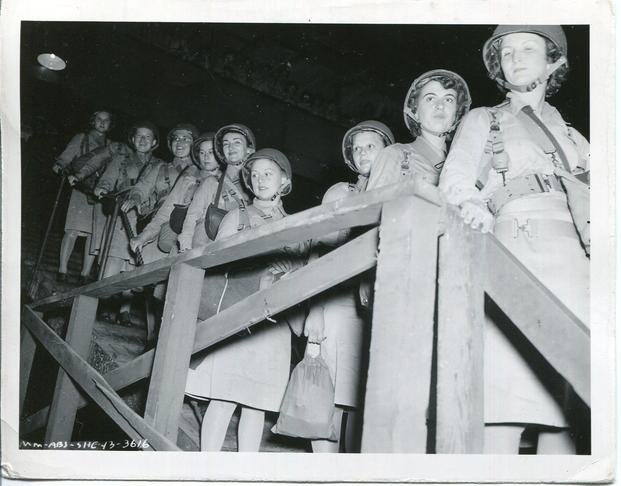
Some women actually applauded gender relations, such as Pollock, who stated, “I was delighted to see that the men don’t resent WAACs, but really like and admire us,” and, “I expected the army men might have a guard up, and they don’t. And I am glad.” Frances Harden, a WAC supply sergeant in New Guinea, wrote to a friend, “The fellow whose job I’m taking is a peach of a guy. He’s so patient and nice to me. Just a heck of a good fellow.”
Whether they went so far as to applaud gender relations or not, many women summarized their service with quotations like, “I am proud to wear the WAC uniform, and I guess I love just about everything that goes with it”; “Now I know where I belong”; “No matter how complicated the process may be, the Army always comes through in the end”; “Maybe I sound like Pollyanna. But I really felt that it was a very fair Army”; and “Settling down to Army life wasn’t hard for most girls.” Whether or not we today think the Army of World War II was “fair,” many women at the time felt it so and emerged from their service without resentment.
Those women who worked past objections to their presence instead of quitting often persevered in changing attitudes, as many of those male soldiers who initially objected to gender integration succumbed to the obvious realities of WAAC/WAC capability. Dottie Gill revealed, “Each week, a couple of girls were placed in the station, and even though the boys hated to admit it, the work was handled better than ever. Headquarters was speechless and then happy, for the station was running smoother than ever.”
Male soldiers often admiringly acknowledged this stoic perseverance, with one soldier stating, “In all the years I’ve been in, I never saw a bunch of men rookies that caught on so quick. … you can’t make them complain” and another confessing ...
Like most of my contemporaries, I wasn’t much impressed by the thought of women in uniform. …Today, after watching some 40,000 or more … I’ve been completely converted. … I will say that the WAC is a good deal more efficient that many all-male outfits that I could name. There are no better soldiers on Earth.
Ignoring or rationalizing harassment or discrimination might seem to be passive forms of coping today, but the evidence shows these methods proved effective to many WAACs/WACs during World War II. Women stubbornly persisted in their new military roles instead of quitting and often impressed those around them. That persistence forced many dubious career soldiers incredulously to quote that “old Army saying”: “You can’t kill a WAC.” A unified, radical protest or the initiation of legal proceedings against sexual harassment or discrimination by these patriotic women was unlikely in time of war. It was, in fact, unlikely any time in the 1940s.

Army Historical Foundation photo
The WAACs/WACs of World War II fought stereotypes, sexual harassment and gender discrimination in a time when no laws aided them in doing so, a time when, according to WAC officer Mildred Bailey, “We couldn’t afford to go contrary to public attitude.” Hardly meek, these women successfully and calculatedly exploited their skills, tenacity, and faith in themselves, believing that their duty to their country and the opportunities afforded by military service were worth any discrimination or harassment they might encounter.
An overwhelming number of WAACs/WACs, regardless of how they coped with gender integration, expressed no regrets over their service. According to Annie McCarthy, “There was no time that I regret.” Nancy Hinchliffe stated of her experiences, “Mine were all good” and vowed, “If somebody came to me and said they’re taking old women, I’d go with them today.” Such testimony provides further evidence of women’s tenacity and relative satisfaction.
More than 150,000 of these courageous, pioneering women served with the Women’s Army Corps during World War II, most gladly and without regret. Their effectiveness led to the Women’s Armed Services Integration Act of 1948, which guaranteed women a permanent place in the military services.
Then, in 1978, the Army abolished the WAC and fully subsumed women into the regular Army. Women in the Army continue to break down barriers today. The trailblazing WAACs and WACs of World War II set this course when they answered the call that would integrate by gender what historians have called the “most prototypically masculine of all social institutions,” the United States Army.
About the Army Historical Foundation
The Army Historical Foundation establishes, assists and promotes programs and projects that preserve the history of the American soldier and promote public understanding of and appreciation for the contributions by all components of the U.S. Army and its members. The foundation serves as the Army's official fundraising entity for the Capital Campaign for the National Museum of the United States Army. The museum will be constructed at Fort Belvoir, Virginia, to honor the service and sacrifice of all American soldiers who have served since the Army's inception in 1775. For more information about the foundation, the National Museum of the United States Army and the Registry of the American Soldier, visit www.armyhistory.org.
Want to Know More About the Military?
Be sure to get the latest news about the U.S. military, as well as critical info about how to join and all the benefits of service. Subscribe to Military.com and receive customized updates delivered straight to your inbox.
